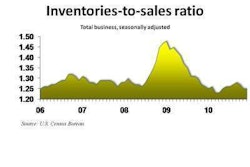
Trucking industry executives speaking at a meeting on Thursday, Feb. 17, to discuss proposed hours-of-service changes urged the Federal Motor Carrier Safety Administration to retain the current regulations. In a listening session and webcast organized by FMCSA, representatives from carriers and trucking groups said proposed changes wouldn’t lead to improvements and would complicate requirements for companies and drivers alike.
Dave Osiecki, head of policy and regulatory affairs for the American Trucking Associations, said the HOS proposals aren’t the best way to address cost-benefit solutions for fatigue among truckers. Osiecki pointed out FMCSA isn’t following sound safety research in making the proposed changes. He called the 34-hour restart change an “unjustified overreach” of the regulation.
“The current rules are working,” Osiecki said, adding FMCSA should withdraw the HOS proposal issued Dec. 23. “To better address the causes of fatigue in transportation and trucking, the FMCSA should focus its expertise, energy and resources on sleep disorder issues, including screening and training, and promote use of fatigue risk management programs.”
Don Osterberg, senior vice president of safety and security at Schneider National, said the proposed changes wouldn’t enhance safety. “It certainly won’t make it worse. I don’t think you can say it will improve safety, either,” he said, referring to FMCSA staff members attending the Washington, D.C.-area listening session.
Referring to the impact of the proposals on business, Osterberg said productivity would drop 4.72 percent. Schneider drivers would get home 25 percent less under the proposal, he said. The average daily mileage would fall from 501.7 miles to 478. To compensate for that loss, the company would have to increase driver pay by $3,000 annually to offset the productivity decline, Osterberg said. “We will have to increase driver pay anyway [because of ongoing supply and demand], but that would be a component that would add cost to the supply chain,” he said.
On the restart provision, Osterberg said, “I don’t believe the restart proposal will have a significant negative impact on productivity. It will be a nuisance. The average restart break our fleet takes is 62 hours.”
Osterberg also made a pitch for the electronic onboard recorder mandate proposed by FMCSA on Jan. 31. “Let’s measure the compliant driver by the effects of the current hours-of-service rules, and if they need to be changed, change them then,” he said.
Bob Petrancosta, vice president of safety at Con-way Freight, contended the proposed rules would hurt drivers, the environment and the economy without improving safety. He said under current HOS rules, his company’s reportable accident rate has remained stable.
“By reducing the number of hours drivers can operate every day, it would necessitate the use of more vehicles, which will lead to greater traffic congestion,” Petrancosta said. “Further, reduced industry capacity will result in higher shipping costs, which we will have to pass on. Reducing the work day from 14 to 13 hours will result in less wage-earning capability for our drivers. While the individual driver may be earning less, our company costs will increase as more drivers are needed.”
Todd Spencer, executive vice president of the Owner-Operator Independent Drivers Association, reiterated the need for rules flexibility for drivers. Spencer also cited the negative role of shippers and receivers on drivers’ schedules, health, safety and fatigue and their ability to comply with HOS regulations. “The overwhelming majority of drivers are not happy with any reduction in available driving time, the mandatory half-hour break or the two overnight midnight-to-6 a.m. rest periods required for their 34-hour restart provision,” he said.
Spencer added that some OOIDA members suggested that if a reduction in driving time should be considered, it should be focused on newer drivers with less experience and those more likely to get into accidents.
Just before the listening session, FMCSA announced that it had extended the public comment period for its HOS notice of proposed rulemaking from Feb. 28 to March 4. FMCSA also placed three additional documents in the public docket concerning the cumulative fatigue function, coefficient estimates and an explanation of coefficient names as requested by ATA; and an Excel spreadsheet containing data using the formula in the HOS Regulatory Evaluation to link the hours worked in the previous week to fatigue the following week. The agency also made a number of clerical corrections to the HOS proposed rule.
Also just before the session, ATA released an independent review of FMCSA’s hours-of-service Regulatory Impact Analysis that found the agency overstated the proposal’s benefits. An Edgeworth Economics independent review argued that while FMCSA states its proposal would result in up to $380 million in annual benefits, the proposal actually would result in net costs, and not benefits, of about $320 million a year. According to the study, FMCSA made unreasonable assumptions about the safety of the trucking industry by sampling only carriers it subjected to a compliance review, generally for not following federal safety rules; and in formulating its proposal, FMCSA used crash data collected before the current rules went into effect, ignoring their positive safety impact on the industry.











